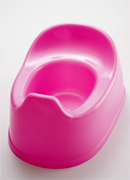Behaviour
Caring for babies
Bottle feeding
Changing a nappy
Cleaning and sterilising bottles
Daily cleaning tasks
Helping new children settle in
Preparing for a nappy change
Sleep patterns – babies
Sleep routines – babies
Toilet training
Caring for children
Allowing time for practice
Dressing/undressing
Mealtimes
Nappy change
Packing away/caring for the environment
Sleep/rest time
Toileting
Common self-help milestones
Tips for sleep and rest time
Self image
Communication
Body language
Limits and guidelines
Ways children communicate
Greeting children and families
Modelling appropriate communication
Questioning
Verbal and non–verbal communication
Acknowledging children's feelings
Listening attentively
Communicating with Aboriginal and Torres Strait Islander parents/carers
Development
Allowing time for practice
Dressing/undressing
Mealtimes
Nappy change
Packing away/caring for the environment
Sleep/rest time
Toileting
Common self-help milestones
Creative development
Language development
Modelling positive relationships
Physical development
Sharing and taking turns
Sleep patterns – babies
Sleep routines – babies
Encourage independent problem solving
Fundamental movement skills
Health, hygiene and safety
Coping with stress
Correct manual handling principles
Daily cleaning tasks
Hand washing
Hand washing poster
Manual handling overview
Toilet training
Safety checklist
Learning experiences and play
Environmentally friendly learning experiences
Learning experiences for different development areas
Creative resource materials
Arranging the environment to facilitate learning and pleasure
Indoors and outdoor areas
Creating a positive physical environment
Legal and ethical issues
Child abuse case studies
How do I recognise when a child or young person is at risk?
Tips on dealing with disclosures
Observation methods
Arranging Experiences (PDF 351Kb)
Recording observations
Rules for making observations
What you can learn from observations
Programming
Children’s interests, strengths, needs and skills
Extending the children’s interest in dinosaurs
Objective observation
Planning an OSHC environment
Behavior management plan
Planning enjoyable experiences
Planning experiences for 0 - 2 years age group
Planning experiences for 2 - 3 years age group
Planning experiences for 3 - 5 years age group
Building self-help skills: toileting
The key to toilet training is toilet readiness. Children must be physically ready, which means they can hold on and let go at will. Children must be mentally ready, which means they know what is expected. Children must be emotionally ready, which means they are willing participants. When children display all three, toilet training will occur naturally.

Toileting should always be supervised to ensure that children who are learning and establishing new skills receive assistance, if required, and that children who are well established in this area are constantly being reinforced with positive guidance and support. Children should always be encouraged to follow appropriate hygiene practices when toileting (no matter how old they are).
In order to develop and establish toileting, the bathroom or toilet area must be suitable so that children have only positive experiences. You must also provide indirect and direct opportunities for all children.
Below are some carers ideas on how to ensure that toileting becomes an opportunity for encouraging self-help skills and autonomy in children.
‘I put a step at one of the toilets so they can sit on the seat without being helped up.’
‘Our toilet area has lots of bright and colourful pictures. The children help to decorate it and they are really careful about keeping it clean.’
‘I keep an eye out for any power struggles around the toilet - they can be so damaging to a child's development. We also sing songs and talk about what's happening.’
‘I make sure I set a relaxed tone around toileting and I encourage everyone to be gentle and understanding about 'accidents'.’
Working with parents
Parents play a vital role in the success of toileting and you should be aware that parents may have differing opinions or beliefs when it comes to their child and toilet training.
Below are some ideas on how to approach parents to ensure a child reaches toileting success.
- Ask parents how they are helping their child to learn to use the toilet at home.
- Share with parents the steps you take to help their child when toileting.
- Find and share resources with parents.
- Discuss their child's progress regularly to ensure consistency between home and child care.
- Help parents to be realistic about their expectations by gently reminding them:
- all children are different
- loose, easily removed clothing makes it easier for the child to go to the toilet
- children sometimes have a lapse in toilet training due to family stresses, a new sibling, etc.